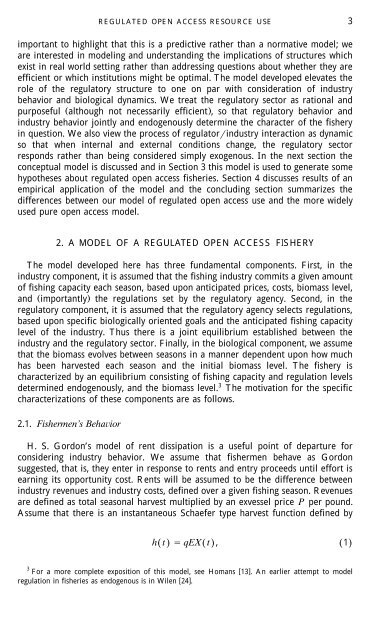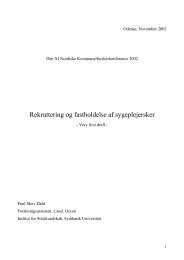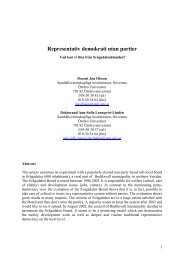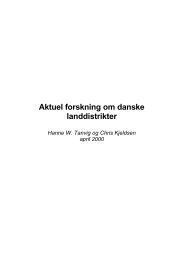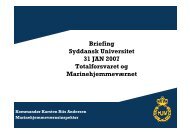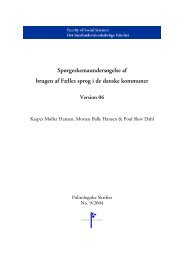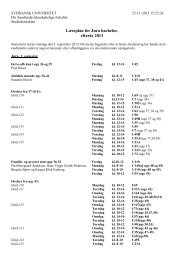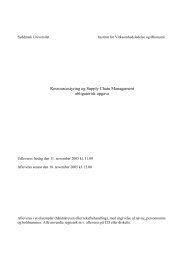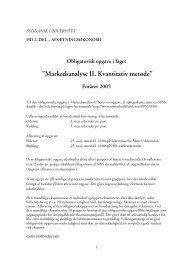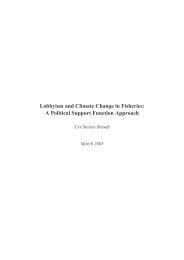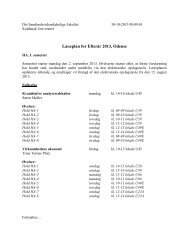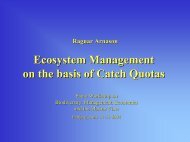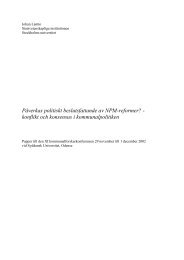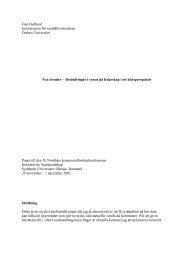A Model of Regulated Open Access Resource Use
A Model of Regulated Open Access Resource Use
A Model of Regulated Open Access Resource Use
You also want an ePaper? Increase the reach of your titles
YUMPU automatically turns print PDFs into web optimized ePapers that Google loves.
REGULATED OPEN ACCESS RESOURCE USE 3<br />
important to highlight that this is a predictive rather than a normative model; we<br />
are interested in modeling and understanding the implications <strong>of</strong> structures which<br />
exist in real world setting rather than addressing questions about whether they are<br />
efficient or which institutions might be optimal. The model developed elevates the<br />
role <strong>of</strong> the regulatory structure to one on par with consideration <strong>of</strong> industry<br />
behavior and biological dynamics. We treat the regulatory sector as rational and<br />
purposeful Ž although not necessarily efficient ., so that regulatory behavior and<br />
industry behavior jointly and endogenously determine the character <strong>of</strong> the fishery<br />
in question. We also view the process <strong>of</strong> regulatorindustry interaction as dynamic<br />
so that when internal and external conditions change, the regulatory sector<br />
responds rather than being considered simply exogenous. In the next section the<br />
conceptual model is discussed and in Section 3 this model is used to generate some<br />
hypotheses about regulated open access fisheries. Section 4 discusses results <strong>of</strong> an<br />
empirical application <strong>of</strong> the model and the concluding section summarizes the<br />
differences between our model <strong>of</strong> regulated open access use and the more widely<br />
used pure open access model.<br />
2. A MODEL OF A REGULATED OPEN ACCESS FISHERY<br />
The model developed here has three fundamental components. First, in the<br />
industry component, it is assumed that the fishing industry commits a given amount<br />
<strong>of</strong> fishing capacity each season, based upon anticipated prices, costs, biomass level,<br />
and Ž importantly.<br />
the regulations set by the regulatory agency. Second, in the<br />
regulatory component, it is assumed that the regulatory agency selects regulations,<br />
based upon specific biologically oriented goals and the anticipated fishing capacity<br />
level <strong>of</strong> the industry. Thus there is a joint equilibrium established between the<br />
industry and the regulatory sector. Finally, in the biological component, we assume<br />
that the biomass evolves between seasons in a manner dependent upon how much<br />
has been harvested each season and the initial biomass level. The fishery is<br />
characterized by an equilibrium consisting <strong>of</strong> fishing capacity and regulation levels<br />
determined endogenously, and the biomass level. 3 The motivation for the specific<br />
characterizations <strong>of</strong> these components are as follows.<br />
2.1. Fishermen’s Behaior<br />
H. S. Gordon’s model <strong>of</strong> rent dissipation is a useful point <strong>of</strong> departure for<br />
considering industry behavior. We assume that fishermen behave as Gordon<br />
suggested, that is, they enter in response to rents and entry proceeds until effort is<br />
earning its opportunity cost. Rents will be assumed to be the difference between<br />
industry revenues and industry costs, defined over a given fishing season. Revenues<br />
are defined as total seasonal harvest multiplied by an exvessel price P per pound.<br />
Assume that there is an instantaneous Schaefer type harvest function defined by<br />
hŽ t. qEXŽ t ., Ž 1.<br />
3<br />
For a more complete exposition <strong>of</strong> this model, see Homans 13 . An earlier attempt to model<br />
regulation in fisheries as endogenous is in Wilen 24 .


